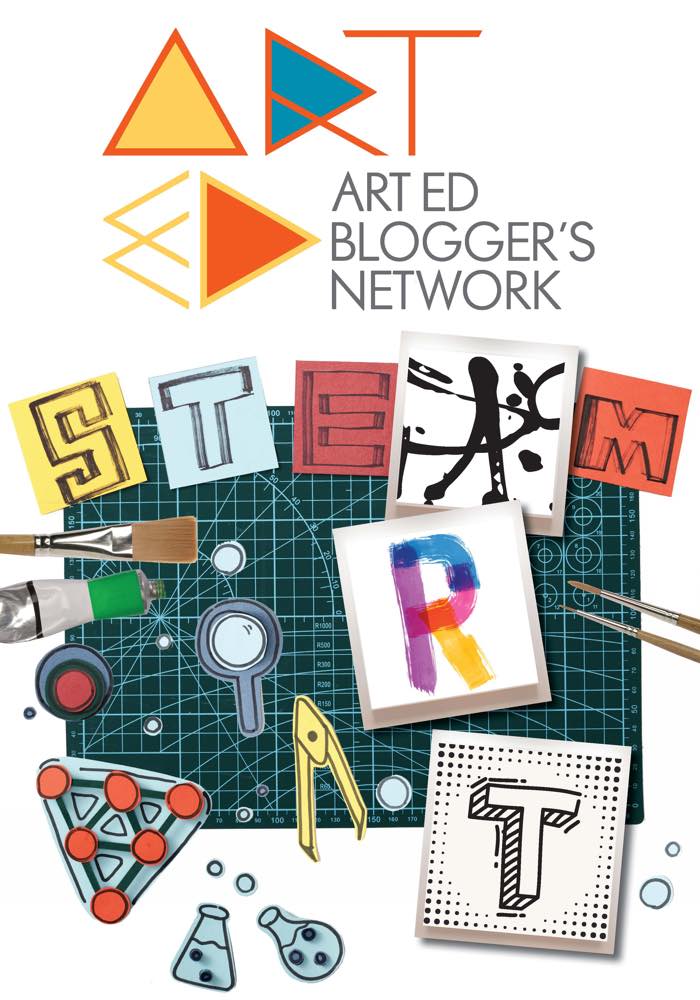A few years back, I wrote an article about STEAM for Arts and Activities magazine. I would like to revisit a few points from the article and share some awesome things our school has done that reflects the STEAM approach. I'm also very excited that our school is in the process of creating a maker's space connected to our new STEAM supply room, which we've been using quite a bit!
Many educators have been pushing for changing STEM to STEAM (including the A for arts) to truly meet the standards of 21st century skills. According to Susan Riley from Education Closet*, “STEM alone misses several key components that many employers, educators, and parents have voiced as critical for our children to thrive in the present and rapidly approaching future.”
To implement the STEAM approach, be sure to include standards from different disciplines, which create interdisciplinary connections.
S We teach science in art. When introducing lessons about landscapes, living forms, or the human body, we identify and describe elements in artworks reflecting these subjects. My students can tell you what fins are for on a fish when creating an ocean-themed project, or what animals can camouflage to hide from predators in a pattern project. Every Spring, we hatch eggs in my art room so students can document the process in drawing, with a final quick sketch of baby chicks chirping in the room!
We are also tapping into science standards when working with materials. Through the use of artistic materials, we are performing experiments and manipulating the ingredients to create something new. Clay is a prime example. When you first work with ceramic clay, it is soft and damp, but once dried after your project is created, the clay is hardened and ready for firing or painting.
T We teach technology in art. Even if your school has little to no resources for hands-on technology in the classroom, you still have some form of modern day conveniences within your room. Currently chrome books and iPads are the next wave in digital arts. Our school now has 1+1 chrome books for the students. At the end of every project, students bring their chrome books for writing artist statements in Artsonia and learning new art games I gathered together using Symbaloo. February also featured a Digital Learning Day, which students used technology throughout the day.
E We teach engineering in art. We know of engineering as a branch of science and technology that focuses on the design, construction, and use of machines and structures, but it is also the action of working artfully to bring something about. It does sound like the arts can fit into this category, but when STEM is talked about in a curriculum, many times the “creating” part of engineering focuses on the mechanical aspect. In art, we design, construct and many times use our artworks from our imagination or from subjects that inspire us. We can be architects designing drawings of buildings, fabricators constructing mechanical artworks, or mini scientists designing robots. I admit, I haven't gone as far as designing robots or Rube Goldburg performances as of yet, but I have some pretty awesome little architects in my classroom!
A We advocate for the arts in education. We are the glue that holds the bridge between subjects together. When advocating for the arts in your schools, share how you tap into core subjects in your lessons, reinforcing what students learn. This can be done while you show how you keep the integrity of the art standards. Display your students’ work around the school, share it in the community, and show your administration the importance of the arts in STEAM.
M We teach Math to the students. We use geometry, symmetry, perspective, measurements, and more, all while scaffolding these skills as the grade levels advance. Are you gridding to create larger scale projects? You’re including mathematic standards within your lessons! While you are assessing student work that requires the use of shapes, symmetry, and measurements, we are also assessing on the math standards. One of the first lessons I teach to kindergarten is identification of shapes and creating an image out of shapes, which is one of the kindergarten math standards!
In the beginning of the school year, our school designed a STEAM room for all the teachers to use with classroom lessons and projects. Even I shop the space for items to use for my lessons! Microscopes, magnifying glasses, spray bottles, styrofoam shapes, and so much more!

Participating Art Teacher Blogs:
- Art Class Curator
- Art Ed Guru
- Art is Basic
- Art Room Blog
- Art with Mr. E
- Arte a Scoula
- Artful Artsy Amy
- Brava Art Press
- Capitol of Creativity
- Create Art with ME
- MiniMatisse
- Mr. Calvert's Art Room Happenings
- Mrs. Boudreaux's Amazing Art Room
- Mrs. T's Art Room
- Party in the Art Room
- shine brite zamorano
- Tales from the Traveling Art Teacher
- There's a Dragon in my Art Room










Steam is an amazing platform for a gamer! Hey, game lovers, let's get started right away!
ReplyDelete